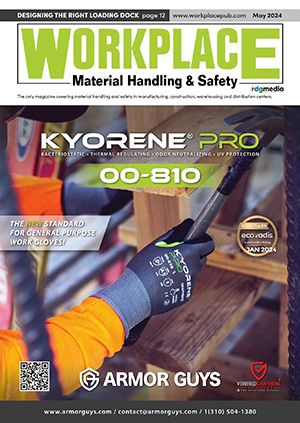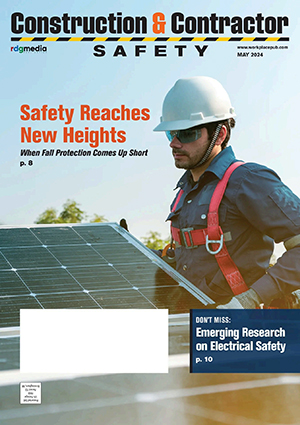Heat Stress Assessment & Prevention
By: Doug Niemtschk, Contributor
A ccording to OSHA, workers suffer more than 3,500 injuries and illnesses related to heat each year. Preventing heat-related
ccording to OSHA, workers suffer more than 3,500 injuries and illnesses related to heat each year. Preventing heat-related
illnesses and injuries is important. In fact, OSHA felt it was so important, they implemented a National Emphasis Program (NEP) on April 8, 2022, that targeted over 70 high-risk industries. The NEP will end in 2025. The NEP will look at an employer’s written heat illness and injury program. This article discusses some things that should go into developing a good heat illness and injury prevention program (HIIPP).
Evaluating Heat Conditions
As industrial hygienists or safety professionals, it is important that we first be able to anticipate, recognize and evaluate heat conditions that can result in injury or illness. Once we do that, there must be detailed controls implemented — and then confirmation that they are working properly.
One good way to anticipate when the heat is going to be a problem is to listen to the alerts put out by the National Weather Service. Your local news will also announce what the heat index is.
Recognize where your risks are greatest. Risk factors for workers can include lack of heat acclimatization, prior heat illness, low physical fitness and the use of some medications (e.g., blood pressure medications, antihistamines, decongestants, etc.).
Evaluating the heat risk potential should be done by measuring the heat where the work is being done. This means using a Wet Bulb Globe Temperature (WBGT) monitor. Unlike the heat index, the WBGT monitor will measure the effects of direct solar radiation on an exposed surface, such as the skin or clothing. This part of the instrument is called the Black Globe Temperature (TG) sensor. It uses a sensor surrounded by a black globe.
A WBGT monitor also measures the ambient air temperature (TA) and percentage of relative humidity (WB). All three measurements are then added together using the following formula: WBGT = 0.7 WB + 0.2 TG + 0.1 TA. Most WBGT monitors do this calculation for you and have a single number output. Your written HIIPP should indicate who is responsible for taking these measurements and when.
Controlling Heat-Related Incidences

Evaluating the heat risk potential should be done by measuring the heat where the work is being done. © Quality Stock Arts – stock.adobe.com
Once you’ve taken your WBGT measurements, you need to decide what you will do to control the risk of heat-related illnesses and injuries. One control measure is the use of a work-rest cycle. The higher the WBGT temperature, the longer the breaks should be in any given hour. For example, at a WBGT temperature of 84° Fahrenheit, with moderate work, a work-rest cycle of 50 minutes work and a 10-minute break might be appropriate. A WBGT temperature that is greater than 90 will need a much longer break (e.g., 30 minutes). Your HIIPP should develop a table that defines what these limits are.
Use of the buddy system is another great control measure. All persons should be trained to recognize the signs and symptoms of heat-related illnesses (e.g., heat stress, heat stroke, etc.). Next, everyone should be assigned a partner or “buddy” that will keep an eye out for the signs and symptoms. Supervisors should also watch for signs and symptoms. If any are noticed, the appropriate response needs to happen (i.e., move to shaded area, drink plenty of fluids for heat stress; heat stroke will need immediate medical attention). Your HIIPP should spell all of this out.
In the NEP, OSHA recommends that your HIIPP contain other control measures, as well. These include access to shaded areas and cool drinking water; acclimatization of new and returning workers; earlier start times to limit heat exposures, etc. Set standards for how much drinking water workers should be consuming on an hourly basis. When working in the heat, drink one cup (8oz) of water every 15–20 minutes. Do not exceed 1½ quarts per hour or 12 quarts per day; drinking more than this increases the chance for developing hyponatremia—a medical emergency, because the concentration of salt in the blood becomes too low. Schedule water breaks every hour and encourage water consumption. Provide snacks, as well, since this helps with water retention.
In closing, it takes a plan to prevent heat injuries and illnesses. OSHA expects it. Your employees need it. Take the time to write an HIIPP. wmhs



